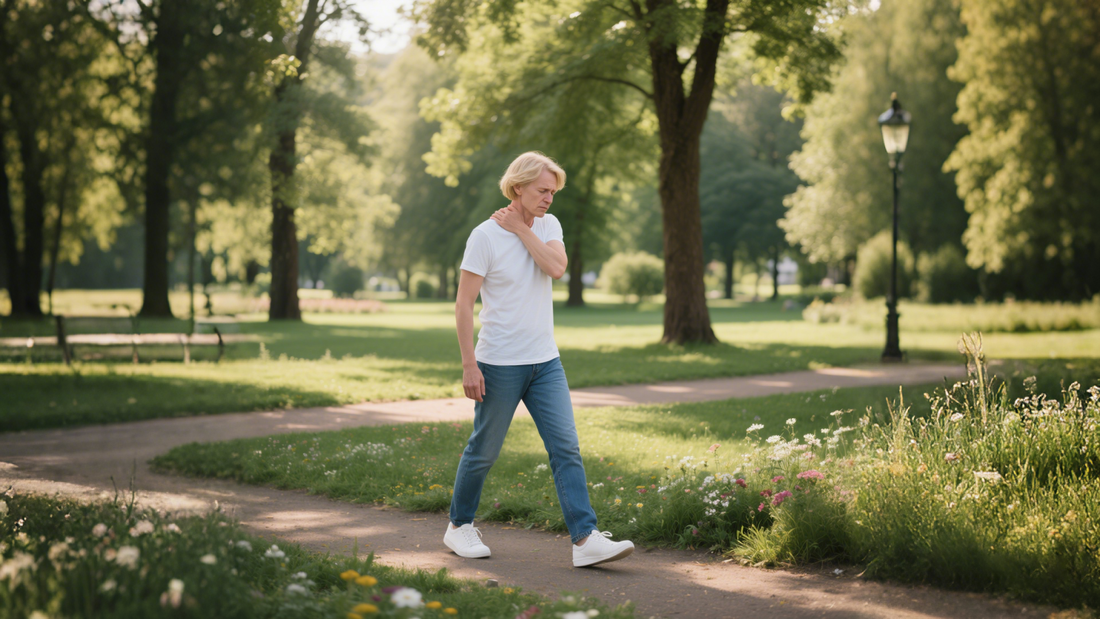
How Moxibustion Can Help Relieve Chronic Neck and Shoulder Pain
mars wuFor many Americans, chronic neck and shoulder pain is more than just a minor discomfort—it’s a daily obstacle. Whether it stems from hours hunched over a computer, stress-related muscle tension, or long-term wear and tear, the pain can erode both physical health and emotional well-being. While conventional treatments such as physical therapy, pain medications, or even steroid injections provide relief for some, others continue to search for safe, long-term alternatives.
As a practitioner rooted in the traditions of classical Chinese medicine, I have seen how moxibustion, a warm and gentle therapy, can bring profound relief to those struggling with persistent upper body pain. In this article, I will explain what moxibustion is, why it works, and how specific acupoints can target neck and shoulder discomfort effectively.
What is Moxibustion?
Moxibustion (or ai jiu in Chinese) is a therapeutic technique that involves burning dried mugwort (Artemisia vulgaris) over specific acupuncture points. The warmth penetrates deeply into the body, invigorating the flow of qi (vital energy) and blood, dispelling cold and dampness, and relaxing stiff muscles.
Unlike direct acupuncture needles, moxibustion delivers soothing heat, which makes it particularly effective for stagnation-type pain—a term in Chinese medicine that describes discomfort caused by blocked energy and blood flow.
Why Neck and Shoulder Pain Responds Well to Moxibustion
From a traditional Chinese medicine (TCM) standpoint, chronic neck and shoulder pain often stems from:
- Qi and Blood Stagnation — Caused by poor posture or emotional stress.
- Cold Invasion — Especially in those with old injuries or chronic tension.
- Liver Qi Constraint — Emotional stress leads to tension and tight muscles.
Moxibustion warms and relaxes the meridians running through the neck and shoulders—especially the Gallbladder, Small Intestine, and Bladder meridians. By doing so, it improves circulation, softens tight tendons, and alleviates discomfort that conventional methods may overlook.
Key Acupoints for Neck and Shoulder Pain Relief
Here are the primary points I often use in my clinical practice:
- Gallbladder 21 (Jianjing) – Located on the top of the shoulder; relieves muscle tightness and stress-induced pain.

- Bladder 10 (Tianzhu) – Base of the skull; helps reduce neck stiffness and headaches.

- Small Intestine 15 (Jianzhongshu) – Upper back and shoulder blade region; targets deeper muscular layers.

- Large Intestine 4 (Hegu) – On the hand; used to disperse upper body tension and promote circulation.

By applying indirect moxibustion (holding the burning moxa stick close to the skin), these points gently warm the tissues and encourage deep relaxation.
Scientific Insights: Why Does It Work?
Modern research shows that moxibustion may:
- Increase microcirculation in the treated area, improving oxygen and nutrient supply to muscles.
- Stimulate release of endorphins, natural painkillers that reduce muscle pain and promote relaxation.
- Modulate autonomic nervous system activity, which helps calm stress-related muscle tension.
A 2019 clinical study published in Evidence-Based Complementary and Alternative Medicine demonstrated that moxibustion significantly reduced neck pain intensity in patients with cervical spondylosis after just four weeks of treatment.
My Patient’s Story: Laura’s Journey
Laura, a 48-year-old graphic designer, came to my clinic with chronic neck and shoulder pain that had persisted for over five years. She had tried chiropractic adjustments, physical therapy, and muscle relaxants, but the relief was always temporary.
After six sessions of moxibustion applied to Gallbladder 21, Bladder 10, and Large Intestine 4, Laura reported sustained pain relief, improved sleep, and greater mobility in her shoulders. More importantly, she felt calmer and less stressed, which reduced the muscle tension that had been feeding her pain cycle.
How to Incorporate Moxibustion at Home
If you’re considering trying moxibustion on your own, I recommend:
- Consulting a licensed acupuncturist first to locate the most effective points for your body.
- Using moxa sticks (available in most Chinese herbal shops) for indirect application.
- Applying heat to each point for 5–10 minutes until a pleasant warmth is felt—never to the point of burning.
- Practicing 2–3 times per week for best results.
Final Thoughts
Moxibustion offers more than just physical pain relief—it promotes energetic balance, calms the nervous system, and fosters a deeper sense of wellness. For chronic neck and shoulder pain, especially cases where stress and poor posture play a role, this gentle yet powerful therapy deserves a place in your healing journey.
